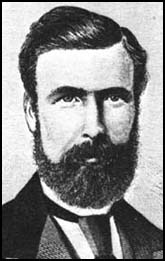Related Research Articles
Craft unionism refers to a model of trade unionism in which workers are organised based on the particular craft or trade in which they work. It contrasts with industrial unionism, in which all workers in the same industry are organized into the same union, regardless of differences in skill.

The United Brotherhood of Carpenters and Joiners of America often simply, the United Brotherhood of Carpenters (UBC) was formed in 1881 by Peter J. McGuire and Gustav Luebkert. It has become one of the largest trade unions in the United States, and through chapters, and locals, there is international cooperation that poises the brotherhood for a global role. For example, the North American Chapter has over 520,000 members throughout the continent.

Robert Applegarth was a prominent British trade unionist and proponent of working class causes.
The Amalgamated Society of Carpenters and Joiners (ASC&J) was a New Model Trade Union in the 1860s in the United Kingdom, representing carpenters and joiners.

The Modern Records Centre (MRC) is the specialist archive service of the University of Warwick in Coventry, England, located adjacent to the Central Campus Library. It was established in October 1973 and holds the world's largest archive collection on British industrial relations, as well as archives relating to many other aspects of British social, political and economic history.

George Potter was a prominent English trade unionist.

The Amalgamated Engineering Union (AEU) was a major British trade union. It merged with the Electrical, Electronic, Telecommunications and Plumbing Union to form the Amalgamated Engineering and Electrical Union in 1992.
The National Building Trades Council (NBTC) was an American federation of labor unions in the construction industry. It was active from 1897 to 1903.

The Confederation of Shipbuilding and Engineering Unions (CSEU), often known as the Confed is a trade union confederation in the United Kingdom.

The London Trades Council (1860–1953) was an early labour organisation, uniting London's trade unionists. Its modern successor organisation is the Greater London Association of Trades (Union) Councils
The Amalgamated Society of Engineers (ASE) was a major British trade union, representing factory workers and mechanics.
The Federated Moulders' (Metals) Union of Australia (FMMUA) was an Australian trade union which existed between 1899 and 1983. It represented moulders – skilled tradesmen who fabricated the moulds for casting metal products in foundries. In spite of only organising within a single skilled occupation, which kept total membership low, the vital position of moulders in major industries such as mining, manufacturing and the railways, ensured that the union remained industrially powerful with a reputation for being highly militant.
The labour movement or labor movement consists of two main wings: the trade union movement or labor union movement, also called trade unionism or labor unionism on the one hand, and the political labour movement on the other.

Edwin Coulson was a British trade unionist.

The London builders' strike of 1859 was a strike and resulting lock out of building trade workers across London. The action did not result in any changes to working conditions, but it led to the formation of new, national trade unions in the United Kingdom.
The history of trade unions in the United Kingdom covers British trade union organisation, activity, ideas, politics, and impact, from the early 19th century to the present.

John Damrel Prior was a British trade unionist and chairman of the Parliamentary Committee of the Trades Union Congress from 1876 until 1879.
The National Federation of Building Trades Operatives (NFBTO) was a trade union federation in the United Kingdom, consisting of unions with members in construction and related industries.
The Notts Trades Council, formally known as the Nottinghamshire Nottingham and Mansfield Trades Council, brings together trade unionists in Nottinghamshire, in England.
References
- 1 2 M. C. Curthoys, "Junta (act. 1862–1871)", Oxford Dictionary of National Biography
- 1 2 Postgate, Raymond (1923). The Builders' History. London: National Federation of Building Trade Operatives. pp. 181–182.
- May, Trevor An Economic and Social History of Great Britain 1760-1990 2nd edition, 1996